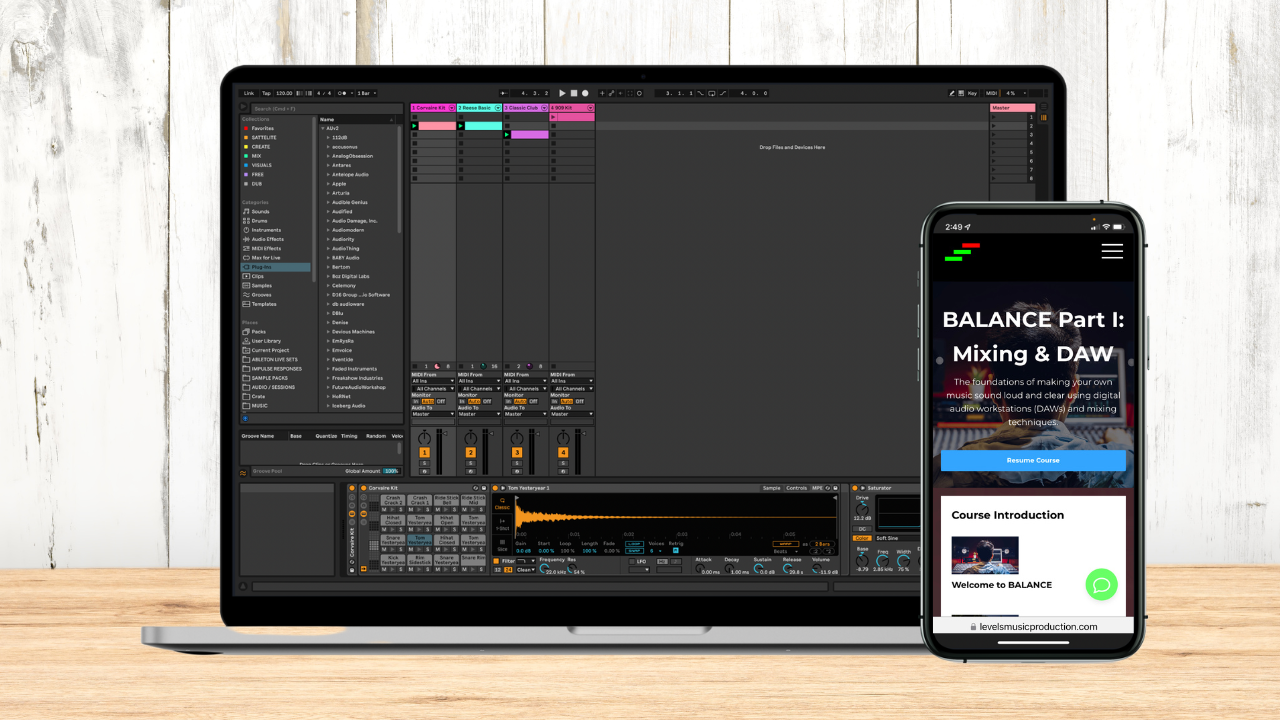Your Mix Sucks! 10 Tips to Get Loud & Clear Mixes

Attention music producers and audio engineers! You’ve watched every YouTube video, tried every plugin, switched headphones (twice), borrowed speakers, listened in your car, listened in your friend’s car, and listened on the sound system at work and STILL…Your Mix Sucks!
It’s not your fault. I’ve been there too. I’ve spent hours trying to figure out why the sound I was hearing in my speakers didn’t translate into the “real world”. I would spend hours mixing only to find that my mixes were quiet, muddy, and unprofessional sounding when I listened to them outside of my home studio.
Then I pressed one button and everything changed. I pressed the “Mono” button.
That one move totally changed the way I approached Mixing forever and made me realize that if my sounds aren’t working with each other, they’re working against each other and cancelling each other out.

Download my FREE Guides: 9 Characteristics of a Sound Wave and 4 Main Elements in Any Mix
If you want your mixes to be loud and clear, start by following these 10 tips:
Listen in Mono - Before you start your mixing process, listen to your tracks in mono to make sure that each instrument and sound has its own space in the mix. This will help you create a balanced and well-defined stereo image.
Use Subtractive EQ - Instead of boosting frequencies to make a sound stand out, try cutting frequencies that are clashing with other elements in the mix. This will create more space for each sound to shine through.
Use HPFs on each track - High-pass filters are your friend. Use them to remove unnecessary subharmonic low-end frequencies from tracks that don't need them, such as vocals or hi-hats. This will clean up your mix and make it sound more professional.
Remove some muddy frequencies in the 150-350Hz zone - This frequency range can often cause muddiness in your mix. Try using a narrow Q (small bandwidth) to cut some of these frequencies from tracks that don't need them, such as guitars or synths.
Use compressors with a fast release time - Fast release times will help you control the dynamics of your mix without sacrificing its energy. This will make your mix sound more punchy and dynamic.
Diffuse, decouple and deaden your home studio - Your mixing environment is crucial to the quality of your mix. Make sure to diffuse any reflections, decouple your monitors from the desk, and deaden any hard surfaces to create a more accurate listening environment.
Get "flat" speakers and headphones that are more accurate - Your mixing tools are just as important as your mixing skills. Invest in speakers and headphones that have a neutral frequency response, so you can hear your mix accurately and make the right decisions.
Listen at about 80-85dB SPL - This is the sweet spot for mixing. It's loud enough to hear all the details in your mix, but not so loud that you risk damaging your hearing, and the frequencies are also the most balanced at this monitoring level. Use a free mobile app to find the SPL level.
Fix any polarity or phase issues with your recordings - This is often overlooked, but it can make a big difference in your mix. Make sure that the polarity and phase of your tracks are correct, so they don't cancel each other out or create unwanted resonances. This is especially important when stacking drums like kicks and snares.
Pick 3 mixes to use as references - Find 3 mixes that sound great everywhere. Ideally mixes that are similar to the genre and style of your mix. Use them as a reference to compare the balance, frequency balance, and overall sound of your mix.
Follow these 10 tips, and you'll be well on your way to creating loud and clear mixes that will make your music stand out from the crowd. Remember, mixing is an art and a science, so take your time, trust your ears, and have fun!

Read How to EQ Music & Vocals: The 5 Step Magic EQ Settings that work on everything!
If you want to take things to the next level, you’ll need to learn the fundamentals of how sound works, how your DAW works, how to set up your home studio, and how to EQ, compress, add reverb & delay, and maximize the sound of your mixes.
I’ll show you everything I’ve learned about mixing in my new live online Course BALANCE: Part I: Mixing & DAW.
It’s 9 live online Zoom classes, on-demand videos, practice audio, assignments, quizzes, and a community of users to compare mixes with and get some valuable feedback.
I can help you take your mixes from zero to hero! Go to yourmixsucks.com to start finally making fire mixes that make people move and get a reaction!
Learn Music Production with my live online classes and on-demand video training: BALANCE Part I: Mixing and DAW
You can find out more and sign up for discounted early access here.
Futch - Music Production Coach and Ableton Certified Trainer
Learn Music Production with my 27-class live online classes and on-demand video training:
Music Production Fundamentals • Writing Exciting Songs • Designing Your Artistic Vision
Make You-Type Beats






